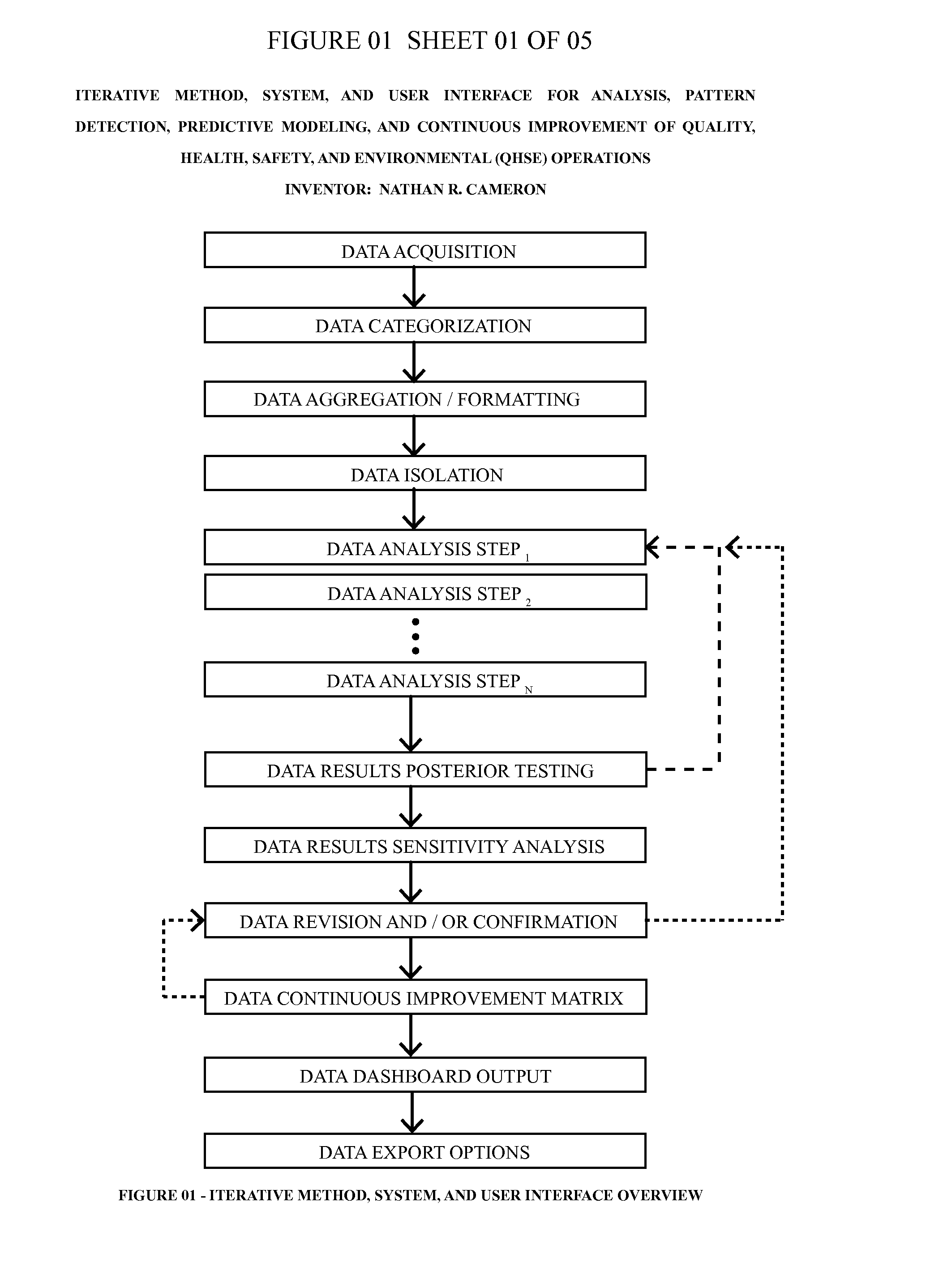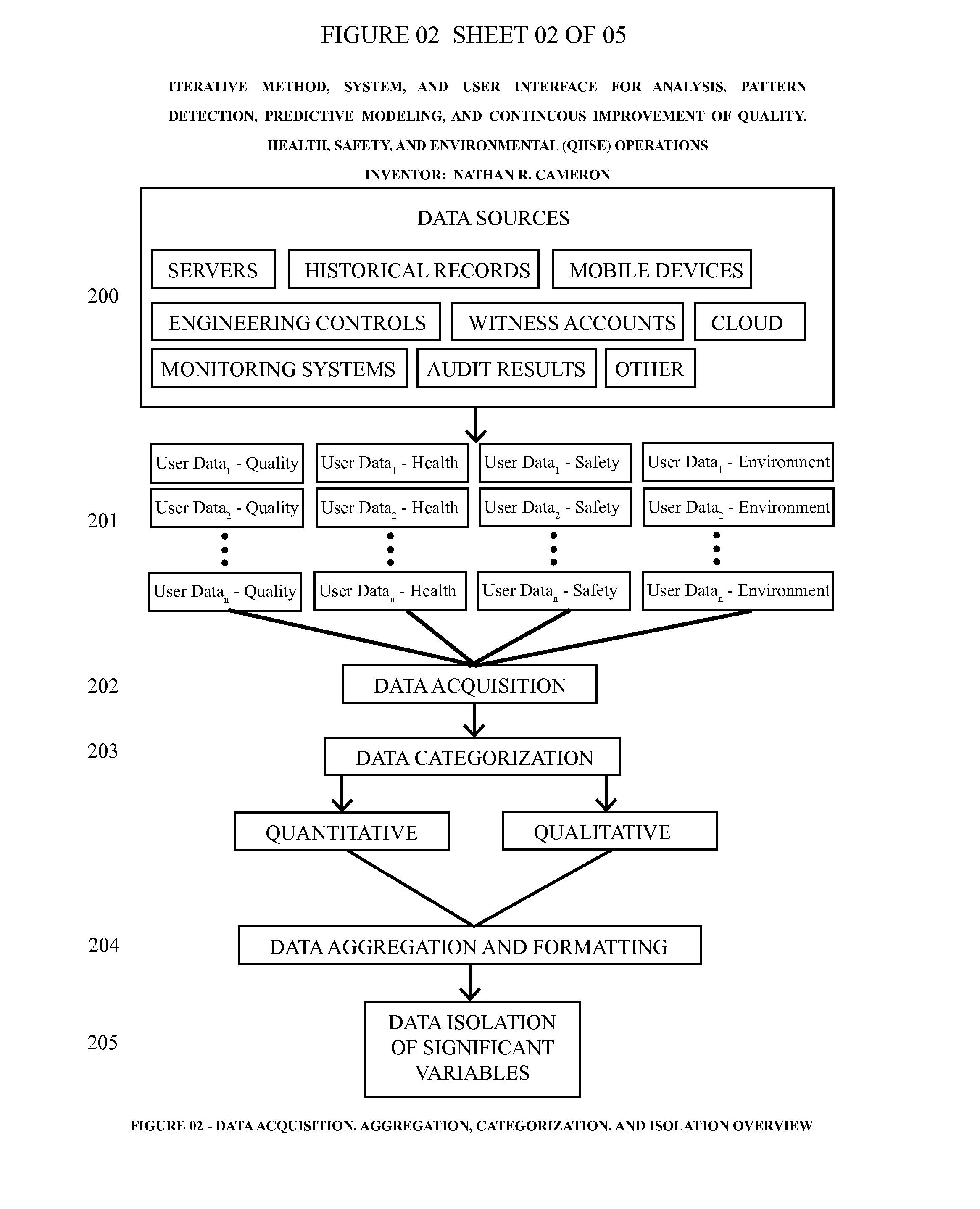Iterative method, system, and user interface for analysis, pattern detection, predictive modeling, and continuous improvement of quality, health, safety, and environmental (QHSE) operations
a technology applied in the field of quality, health, safety and environment (qhse) processes and operations, can solve the problems of inability to fully integrate qhse data, quality, health, safety and environmental degradation, and impose large costs on taxpayers, local communities, and regulatory entities, so as to improve qhse operations
- Summary
- Abstract
- Description
- Claims
- Application Information
AI Technical Summary
Benefits of technology
Problems solved by technology
Method used
Image
Examples
Embodiment Construction
[0014]Commercial and public entities are in constant search for the sustainable growth and increasing the “triple bottom line” of economic profit, social responsibility, and environmental protection. Increasing regulations, media exposure, and global competition mean that continuous operational improvements are essential to long-term success. The often overlooked synergistic relations of Quality, Health, Safety, and Environment (QHSE) operations provide an excellent opportunity for entities to increase production, increase their public profile, reduce costs, mitigate health and safety costs, and exceed regulatory expectations. The present invention has been developed to provide an iterative method, system, and user interface for the analysis, pattern detection, predictive modeling, and continuous improvement of QHSE operations as shown in FIG. 1.
[0015]The steps and embodiments of this invention use a computer based program, coding, and algorithms which are used as a standalone or in...
PUM
 Login to View More
Login to View More Abstract
Description
Claims
Application Information
 Login to View More
Login to View More - R&D
- Intellectual Property
- Life Sciences
- Materials
- Tech Scout
- Unparalleled Data Quality
- Higher Quality Content
- 60% Fewer Hallucinations
Browse by: Latest US Patents, China's latest patents, Technical Efficacy Thesaurus, Application Domain, Technology Topic, Popular Technical Reports.
© 2025 PatSnap. All rights reserved.Legal|Privacy policy|Modern Slavery Act Transparency Statement|Sitemap|About US| Contact US: help@patsnap.com



